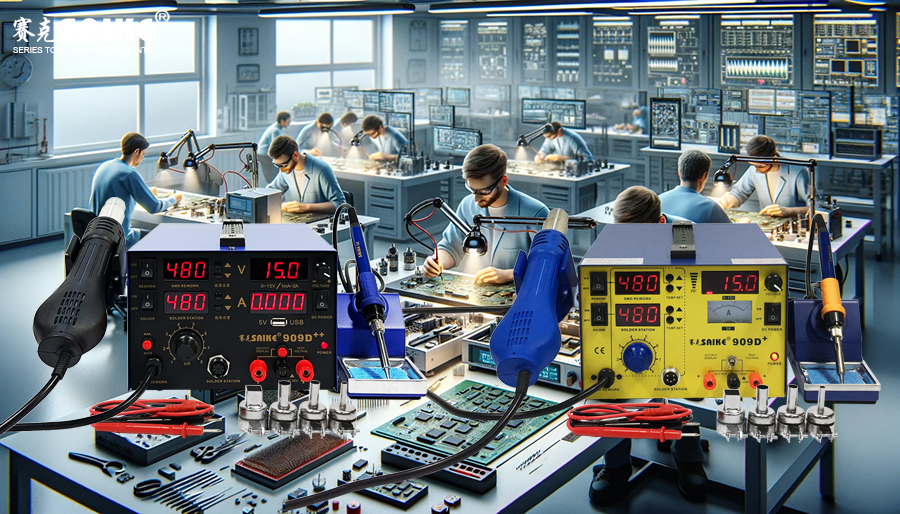
SK-YJ000RFSHY-KP 100011
The hot air rework station is a commonly used device in electronic maintenance, widely applied in the disassembly and welding process of electronic components. However, temperature abnormalities sometimes occur during its usage. This article will delve into the reasons behind temperature abnormalities in hot air rework stations and provide corresponding solutions.
I. Cause Analysis of Abnormal Temperature in Hot Air Rework Stations
1.Temperature Sensor Malfunction
– Sensor Aging: Prolonged use may lead to sensor aging, reducing measurement accuracy and causing temperature abnormalities.
– Sensor Damage: Damaged sensors or poor contacts can directly affect temperature detection, resulting in discrepancies between actual and set temperatures.
2.Control Circuit Malfunction
– Circuit Board Issues: Faults in components on the control circuit board, such as capacitors, resistors, or chips, can affect temperature control.
– Solder Joint Problems: Long-term use may lead to cold solders or desoldering on the control circuit board, destabilizing the circuit.
3.Heating Element Issues
– Heating Wire Aging: The heating element (e.g., heating wire) gradually ages with use, decreasing heating efficiency.
– Heating Tube Damage: Damaged or internally fractured heating tubes can affect heating performance, leading to temperature abnormalities.
4.Air Duct System Malfunction
– Fan Malfunction: The fan is a crucial component of the hot air rework station. A faulty fan disrupts airflow, affecting temperature control.
– Air Duct Clogging: Dust or foreign object buildup in the air duct system disrupts hot air circulation, compromising temperature stability.
5.Power Supply Issues
– Voltage Instability: Unstable power supply voltage can affect the performance of the hot air rework station, leading to temperature abnormalities.
– Power Module Malfunction: Internal power module failures can also prevent proper heating.
II. Solutions for Abnormal Temperature in Hot Air Rework Stations
1.Checking and Replacing the Temperature Sensor
– Sensor Testing: Use a multimeter to check if the temperature sensor’s resistance changes normally. Replace the sensor promptly if abnormalities are detected.
– Regular Maintenance: Regularly inspect and calibrate the temperature sensor to ensure proper functioning.
2.Repairing or Replacing the Control Circuit
– Circuit Board Inspection: Use an oscilloscope or multimeter to check if components on the control circuit board are working properly. Replace faulty components if necessary.
– Solder Joint Inspection: Carefully examine solder joints on the circuit board and re-solder if necessary.
3.Replacing Heating Elements
– Heating Wire Inspection: Check if the heating wire’s resistance falls within the normal range. Replace aging or damaged heating wires promptly.
– Heating Tube Replacement: Purchase and replace damaged heating tubes with identical models.
4.Maintaining the Air Duct System
– Air Duct Cleaning: Regularly clean dust and foreign objects from the air duct system to ensure smooth airflow.
– Fan Replacement: Promptly replace faulty fans to maintain proper airflow circulation.
5.Stabilizing the Power Supply
– Voltage Stabilizer Usage: Use a voltage stabilizer to stabilize power supply voltage and ensure the normal operation of the hot air rework station.
– Power Module Inspection: Regularly check the power module’s status and replace it promptly in case of failures.
III. Conclusion
The hot air rework station plays a crucial role in electronic maintenance, and temperature abnormalities can affect its normal use. Through the cause analysis and solutions provided in this article, we aim to help users quickly diagnose and address temperature abnormalities in hot air rework stations, ensuring their long-term stable operation. Regular maintenance and servicing are also key measures to ensure equipment performance and extend its lifespan.


